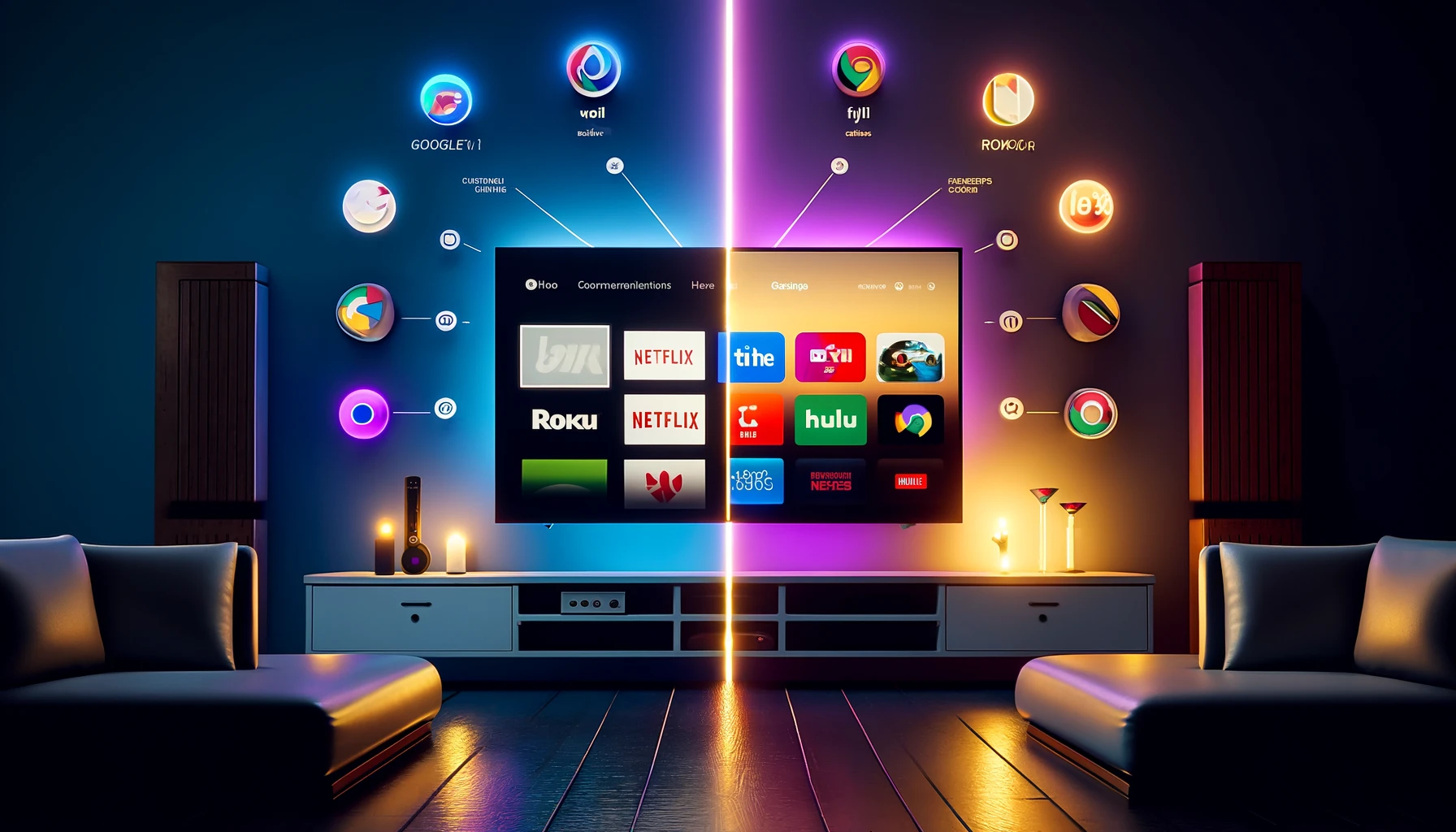When comparing Xiaomi and Realme, you’re looking at two dynamic brands shaking up the budget smartphone market. Xiaomi offers a wider range of devices, often excelling in performance with models like the Redmi Note series. Realme, on the other hand, targets younger consumers with stylish designs and strong multimedia capabilities in its Narzo and 9 series. Both brands are affordable, but Xiaomi generally provides better performance benchmarks, while Realme shines with competitive pricing and solid camera features. Their unique strengths cater to different preferences, and there’s a lot more to uncover in their features and offerings.
Key Takeaways
- Xiaomi offers a broader range of devices, while Realme focuses on affordable options targeting younger, budget-conscious consumers.
- The Redmi series from Xiaomi is known for superior performance, while Realme’s Narzo and GT series excel in gaming and multimedia capabilities.
- Xiaomi’s designs feature premium materials with Gorilla Glass, whereas Realme opts for vibrant colors using polycarbonate for a youthful appeal.
- Both brands provide strong camera capabilities, with Xiaomi emphasizing vibrant images and Realme delivering excellent low-light performance.
- Xiaomi uses a cost-leadership model for competitive pricing, while Realme attracts buyers with straightforward, value-oriented pricing strategies.
Brand Overview
When it comes to budget smartphones, Xiaomi and Realme stand out as two prominent players. Both brands have carved out a significant niche in the competitive smartphone industry, but their brand histories and market positioning set them apart in intriguing ways.
Xiaomi was founded in 2010, quickly rising to fame through its innovative approach and direct-to-consumer sales model. By leveraging online platforms, Xiaomi managed to offer high-quality devices at competitive prices, which helped it gain a loyal customer base. The brand’s focus on user feedback has allowed it to continuously improve its offerings, solidifying its market position.
On the other hand, Realme emerged in 2018 as a subsidiary of Oppo, aiming to cater specifically to younger consumers seeking affordability without compromising on features. Realme’s rapid expansion and aggressive marketing strategies have allowed it to position itself as a challenger in the budget segment, appealing to tech-savvy users.
Key Product Offerings
When you compare Xiaomi and Realme’s key product offerings, you’ll notice distinct strategies in their smartphone lineups and accessory ranges. Each brand positions itself within a specific price range, appealing to budget-conscious consumers while maintaining competitive features. Understanding these nuances can help you make an informed choice that suits your needs and budget.
Smartphone Lineup Comparison
In the ever-evolving budget smartphone market, Xiaomi and Realme stand out with their compelling product offerings that cater to a variety of user needs. Both brands have quickly adapted to smartphone trends, ensuring their lineups reflect changing user preferences.
Xiaomi’s lineup features the Redmi series, which is well-regarded for its balance of price and performance. The Redmi Note series, in particular, has gained popularity for its robust specifications, such as large batteries and decent cameras, appealing to users who prioritize functionality without breaking the bank.
Realme, on the other hand, has carved its niche with the Realme Narzo and Realme 9 series. These models often come packed with competitive features like fast charging and high-refresh-rate displays, targeting younger consumers who value multimedia experiences and gaming performance.
When comparing the two, it’s clear each brand tailors its offerings to specific demographics. Xiaomi leans towards a more extensive range of devices for various budgets, while Realme focuses on youthful energy and innovation. This strategic differentiation helps both brands thrive in a crowded industry, meeting diverse user preferences effectively.
Accessories and Gadgets
Both Xiaomi and Realme have expanded their ecosystems beyond smartphones, offering a range of accessories and gadgets that enhance the user experience. You’ll find that both brands focus on accessory compatibility, ensuring that their gadgets seamlessly integrate with their smartphones. This thoughtful design approach not only boosts convenience but also enhances functionality.
Xiaomi’s accessory lineup includes everything from smart bands and wireless earbuds to home automation devices, showcasing their commitment to gadget innovation. Their products often come with advanced features such as fitness tracking and voice control, appealing to tech-savvy users.
On the other hand, Realme’s offerings are equally impressive. They’ve developed a variety of wearables, audio devices, and even smart home gadgets. Their unique designs and competitive features often attract a younger demographic, enthusiastic to embrace the latest technology trends.
When it comes to accessories, both brands focus on delivering quality and versatility, while constantly innovating to stay ahead in the market. Ultimately, your choice may come down to personal preference, but both Xiaomi and Realme provide compelling options that can elevate your everyday tech experience.
Price Range Analysis
Steering through the price ranges of Xiaomi and Realme’s key product offerings reveals significant insights into their market strategies and consumer targeting. Both brands have effectively carved out their niche in the budget segments, but they approach pricing differently, which can impact your buying decision.
Xiaomi typically offers a broader price range, starting from entry-level models around $100 to mid-range options nearing $400. Their pricing strategy often reflects their extensive product lineup, allowing you to choose from a variety of features and specifications tailored to different needs. On the other hand, Realme tends to focus on aggressively priced models, usually offering devices that start around $150 and cap off at about $300. This pricing approach aims to attract budget-conscious consumers looking for value without sacrificing performance.
When you analyze the price trends, Xiaomi’s versatility may appeal to those seeking a wider selection, while Realme’s straightforward pricing structure simplifies your choice. Ultimately, both brands cater to diverse consumer preferences, making them strong contenders in the budget smartphone sector. So, your choice might boil down to specific features or brand loyalty.
Price Comparison
When you compare Xiaomi and Realme, their pricing strategies reveal a lot about their market landscape. Xiaomi often focuses on providing a wider range of options at slightly higher price points, while Realme aims for aggressive pricing to attract budget-conscious consumers. Understanding these tactics can help you assess which brand offers better value for your money.
Pricing Strategies Overview
Although Xiaomi and Realme target similar budgets, their pricing strategies reveal distinct approaches that resonate with different consumer sectors. Xiaomi employs a cost-leadership model, focusing on delivering high specs at competitive prices, which helps them penetrate various market segments. This strategy attracts tech-savvy users who seek performance without breaking the bank.
On the other hand, Realme leans towards a value-oriented strategy. They often price their devices slightly lower than Xiaomi’s offerings, aiming to appeal to first-time smartphone buyers and those looking for budget-friendly options. Their aggressive pricing models can create a sense of urgency, enticing consumers to make quicker purchasing decisions.
Here are three key aspects of their pricing strategies:
- Introductory Pricing: Both brands often launch new models at attractive prices to generate buzz and capture market share quickly.
- Promotional Discounts: Xiaomi frequently utilizes limited-time offers, while Realme often engages in flash sales to attract price-sensitive customers.
- Bundled Offers: Realme provides accessories or services bundled with their devices, enhancing perceived value without greatly increasing costs.
These strategies illustrate how each brand navigates market segmentation while appealing to their respective audiences.
Value for Money Comparison
Evaluating the value for money offered by Xiaomi and Realme reveals significant differences that can influence your purchasing decision. When you explore a value assessment of these brands, it’s crucial to take into account not just the price tags but also the features, performance, and overall user experience.
Xiaomi often provides a broader range of devices, with competitive pricing and solid specifications. Their focus on high-quality components at an affordable price makes them a popular choice. However, Realme typically positions itself as an aggressive challenger, often pricing their devices even lower while packing in impressive features, which can lead to a compelling affordability analysis.
You might find that while Xiaomi phones offer better build quality and software optimization, Realme’s budget offerings sometimes outperform in hardware specifications at similar price points. As you weigh your options, reflect on whether you prioritize brand reputation or cutting-edge features. Ultimately, understanding these nuances will guide you in choosing the brand that offers the best value for your money, ensuring you get the most bang for your buck without compromising on quality or performance.
Design and Build Quality
Focusing on the design and build quality, both Xiaomi and Realme present compelling options for budget-conscious consumers. When you hold these devices, you’ll notice that they prioritize aesthetic appeal and material quality, making them stand out in the crowded budget segment.
Here are three key factors to evaluate:
- Material Quality: Xiaomi often opts for a combination of glass and plastic finishes, giving their devices a premium feel without breaking the bank. Realme, on the other hand, leans towards polycarbonate materials, which are lighter but can feel less robust.
- Design Language: Xiaomi tends to embrace a minimalist approach, offering sleek, understated designs that appeal to a broad audience. Realme, however, injects bold colors and patterns, targeting younger consumers looking for something eye-catching.
- Durability: Both brands guarantee their devices can withstand daily wear and tear. Xiaomi’s use of Gorilla Glass in many models enhances durability, while Realme’s engineering focuses on sturdiness, though it may sacrifice some aesthetic finesse.
Ultimately, your choice between Xiaomi and Realme will depend on whether you prefer a subtle elegance or vibrant flair in your smartphone design.
Performance and Specifications
When it comes to performance and specifications, both Xiaomi and Realme offer impressive options that cater to various user needs. Each brand equips its devices with powerful processors, often featuring Snapdragon or MediaTek chipsets that guarantee smooth multitasking and efficient performance. You’ll find that Xiaomi’s Redmi series often excels in performance benchmarks, consistently scoring higher regarding speed and efficiency compared to Realme’s offerings. However, Realme has been catching up, particularly with its Realme Narzo and GT series.
If you’re a gamer, you’ll appreciate the gaming capabilities of both brands. Xiaomi’s devices typically include gaming modes that enhance performance during intensive tasks, while Realme has focused on optimizing their software for a better gaming experience. Features like higher refresh rates and gaming-centric cooling systems in both brands provide a significant advantage for gamers.
Regarding RAM and storage options, both Xiaomi and Realme offer configurations that cater to users who need ample space for apps and media. Overall, whether you lean towards Xiaomi’s robust performance or Realme’s value-for-money offerings, you can’t go wrong with either in the domain of performance and specifications.
Camera Capabilities
In the area of camera capabilities, both Xiaomi and Realme have made significant advancements, appealing to photography enthusiasts on a budget. When you look at their offerings, you’ll notice that each brand packs impressive camera features into their devices, but they do have their nuances.
- Camera Setup: Xiaomi often boasts multi-lens setups, including ultra-wide and macro lenses, enhancing versatility. Realme, on the other hand, tends to focus on strong primary sensors that deliver excellent performance in various lighting conditions.
- Image Quality: Both brands aim for high-quality image results, but they achieve it differently. Xiaomi typically emphasizes vibrant colors and sharp details, while Realme leans toward natural tones and better low-light capabilities, which can be a game-changer for nighttime photography.
- AI Enhancements: Both brands utilize AI to optimize camera settings automatically, making it easier for you to capture stunning shots without deep technical knowledge.
Software Experience
While impressive camera capabilities can enhance your photography experience, the software that powers these devices plays a pivotal role in overall user satisfaction. When comparing Xiaomi and Realme, the user interface and software experience greatly impact your daily interactions.
Xiaomi’s MIUI offers extensive customization options and a robust app ecosystem. However, some users find its bloatware presence overwhelming, which can lead to a less-than-optimal user experience. On the other hand, Realme’s Realme UI is often praised for its clean and intuitive design, resulting in smoother navigation and performance optimization.
Here’s a quick comparison of key software features:
| Feature | Xiaomi (MIUI) | Realme (Realme UI) |
|---|---|---|
| User Interface | Highly customizable | Clean and intuitive |
| Software Updates | Frequent, but can have delays | Regular and timely |
| Bloatware Presence | Moderate | Minimal |
Both brands prioritize security features, ensuring your data stays safe. Ultimately, your choice may come down to personal preference in design and functionality, but understanding these nuances can greatly enhance your overall experience.
Customer Support and Warranty
Although both Xiaomi and Realme focus on delivering value for money, their customer support and warranty services can greatly influence your buying decision. When it comes to customer support, you’ll want to evaluate the effectiveness of their support channels, as well as how well they respond to customer feedback. Here are three key points to reflect on:
- Warranty Period: Xiaomi generally offers a one-year warranty on most devices, while Realme often provides a similar duration. However, certain models may have extended warranty options, so it’s worth checking.
- Support Channels: Xiaomi boasts a wide range of support channels, including live chat, email, and social media, whereas Realme’s options may vary by region. Reviewing accessibility can save you frustration later.
- Customer Feedback: Pay attention to online reviews and forums. Many users share their experiences regarding response times and issue resolution. This feedback can provide insight into which brand has the upper hand in support reliability.
Ultimately, understanding these aspects can help you choose a brand that not only fits your budget but also offers peace of mind when it comes to customer support and warranty.
Frequently Asked Questions
Which Brand Offers Better After-Sales Service in My Region?
When considering after-sales service in your region, evaluate customer support responsiveness and the number of service centers available. A brand with more accessible locations and efficient support can greatly enhance your overall ownership experience.
How Do Xiaomi and Realme Handle Software Updates?
While Xiaomi boasts a more frequent update schedule, Realme often focuses on refining its user interface. You’ll find Xiaomi updates come quicker, but Realme’s interface enhancements can offer a smoother experience in the long run.
Are There Significant Differences in Battery Life Between the Two Brands?
When comparing battery performance, you’ll notice both brands offer decent longevity. However, Realme often excels in charging speed, allowing you to recharge quickly, while Xiaomi might provide slightly better overall battery efficiency in daily usage.
What Accessories Are Compatible With Xiaomi and Realme Devices?
When considering accessories for your device, both Xiaomi and Realme support various options. You’ll find compatible charging cables, phone cases, screen protectors, and audio accessories that enhance your experience and safeguard your investment effectively.
How Does the Resale Value Compare Between Xiaomi and Realme Smartphones?
You’d think all budget phones depreciate equally, but resale trends show Xiaomi often holds value better. Domain, while popular, typically experiences higher depreciation rates, making Xiaomi a smarter choice if you plan to resell.
Conclusion
In the battle of Xiaomi vs. Realme, it’s clear that both brands offer impressive value in the budget sector. While “you get what you pay for” often rings true, both companies challenge that notion by delivering solid performance, design, and features at competitive prices. Ultimately, your choice may come down to personal preferences in software and aesthetics. Whichever you choose, you can’t go wrong with the quality these brands provide in their price range.






